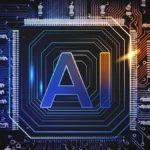Are you fascinated by artificial intelligence and eager to dive into the world of AI but unsure where to start? Do you want to explore powerful AI tools without spending a fortune? Look no further! In this comprehensive guide, we will explore eight fantastic free AI software options perfect for beginners. These tools will help you develop your skills, create innovative projects, and advance your understanding of artificial intelligence—all without breaking the bank.
Why Start with Free AI Software?
Starting with free AI software has numerous benefits:
- Cost-Effective Learning: It allows you to experiment and learn without financial pressure.
- Hands-On Experience: You get practical experience with real-world AI tools.
- Community Support: Many free tools have strong community support, providing ample resources for troubleshooting and learning.
- Foundation for Advanced Tools: They lay the groundwork for transitioning to more advanced, possibly paid, AI software in the future.
Let’s dive into our list of the top eight free AI software for beginners.
1. TensorFlow
Overview
TensorFlow, developed by Google Brain, is one of the most popular open-source libraries for machine learning and deep learning. It offers extensive documentation and tutorials, making it an excellent choice for beginners.
Key Features
- Versatile Models: Build and deploy machine learning models in various environments, including mobile.
- Eager Execution: An intuitive and flexible way to build models and debug with ease.
- Community Support: Strong community and ecosystem with numerous resources.
Getting Started
To get started with TensorFlow, visit the official website and follow their beginner tutorials. Install TensorFlow using pip and explore example projects to understand its capabilities.
2. Keras
Overview
Keras is a user-friendly neural network library written in Python. It runs on top of TensorFlow, making it easy to create and train neural networks.
Key Features
- Simple API: Focuses on being user-friendly and modular.
- Fast Prototyping: Allows for quick and easy model building.
- Support for Multiple Backends: Can run on top of TensorFlow, Theano, and Microsoft Cognitive Toolkit (CNTK).
Getting Started
Install Keras using pip and start with their official tutorials. The comprehensive guides will help you understand the basics of neural network creation and training.
3. IBM Watson Studio
Overview
IBM Watson Studio is a powerful suite of tools for data scientists, application developers, and subject matter experts. The free tier provides ample resources to get started with AI projects.
Key Features
- Collaboration: Enables team collaboration on projects.
- Data Preparation: Tools for data refinement and preparation.
- Automated AI: Automated model building and deployment.
Getting Started
Sign up for the free tier of IBM Watson Studio here. Explore their extensive documentation and community forums to kickstart your AI journey.
4. Microsoft Azure Machine Learning
Overview
Microsoft Azure Machine Learning provides a robust platform for building, training, and deploying machine learning models. The free tier includes access to various tools and resources.
Key Features
- End-to-End MLOps: Comprehensive support for the entire machine learning lifecycle.
- Integrated Notebooks: Jupyter Notebooks for interactive development.
- Drag-and-Drop Interface: Simplifies model creation for beginners.
Getting Started
Register for a free account on Microsoft Azure and follow the beginner tutorials to set up your first machine learning experiment.
5. RapidMiner
Overview
RapidMiner is a data science platform that offers a free version with significant capabilities. It’s designed for users at all levels, from beginners to advanced practitioners.
Key Features
- Visual Workflow Designer: No coding required to build models.
- Extensive Library: Over 1500 algorithms and functions.
- Community Edition: Free version with a large user community.
Getting Started
Download the free version of RapidMiner here. Utilize their beginner guides and community resources to start creating your own data science workflows.
6. KNIME
Overview
KNIME (Konstanz Information Miner) is an open-source data analytics, reporting, and integration platform. It’s ideal for users who prefer a visual programming approach.
Key Features
- Modular Data Pipelines: Create data workflows using drag-and-drop.
- Integrative Tools: Combine tools from different domains.
- Strong Community: Large user base and active forums.
Getting Started
Download KNIME Analytics Platform from the official website. Begin with their beginner tutorials to learn how to build your first data analysis workflows.
7. Orange
Overview
Orange is an open-source machine learning and data visualization tool. It’s perfect for beginners due to its visual programming interface and simplicity.
Key Features
- Interactive Data Visualization: Drag-and-drop widgets for easy workflow creation.
- Educational Use: Designed with teaching and educational purposes in mind.
- Extensible: Add functionalities with additional widgets.
Getting Started
Install Orange from the official website. Explore their tutorials and documentation to start analyzing data and building models quickly.
8. Google Colab
Overview
Google Colab is a cloud-based Jupyter notebook environment that allows you to write and execute Python code in your browser, with no configuration required.
Key Features
- Free GPU Access: Accelerate your computations with free GPU and TPU.
- Easy Collaboration: Share notebooks and collaborate in real-time.
- Pre-installed Libraries: Access to popular libraries like TensorFlow, Keras, and PyTorch.
Getting Started
To start using Google Colab, visit colab.research.google.com. Check out the introductory notebook to understand the basics of using this powerful tool.
Comparison Table of Free AI Software
| Software | Key Features | Ease of Use | Community Support | Best For |
|---|---|---|---|---|
| TensorFlow | Versatile models, Eager execution | Moderate | Strong | Deep learning models |
| Keras | Simple API, Fast prototyping | Easy | Strong | Neural networks |
| IBM Watson Studio | Collaboration, Data preparation | Moderate | Strong | Data science projects |
| Azure ML | End-to-End MLOps, Integrated Notebooks | Moderate | Strong | ML lifecycle management |
| RapidMiner | Visual workflow designer, Large library | Easy | Moderate | Data science workflows |
| KNIME | Modular data pipelines, Integrative tools | Easy | Strong | Data analysis workflows |
| Orange | Interactive data visualization | Easy | Moderate | Educational purposes |
| Google Colab | Free GPU access, Collaboration | Easy | Strong | Python coding and ML |
Frequently Asked Questions (FAQs)
Is AI software difficult to learn for beginners?
While AI software can seem intimidating at first, many tools are designed with beginners in mind. With the right resources and a bit of practice, you can become proficient in using AI tools.
Can I use free AI software for commercial projects?
It depends on the software’s licensing terms. Some free AI tools allow for commercial use, while others may have restrictions. Always check the license agreement.
Do I need a powerful computer to run AI software?
Not necessarily. Many free AI tools, like Google Colab, provide access to powerful cloud-based resources, including GPUs, which can handle intensive computations.
How can I get help if I run into issues using AI software?
Most free AI software has extensive documentation, tutorials, and active community forums where you can seek help and advice.
Are there any prerequisites for learning AI software?
Basic knowledge of programming (especially Python) and a foundational understanding of machine learning concepts are helpful but not always required.
READ MORE : 8 Best AI Software Tools in 2024
Closing Note
Embarking on your AI journey with these free software tools is a fantastic way to gain hands-on experience and deepen your understanding of artificial intelligence. We hope this guide has provided valuable insights and encourages you to explore these powerful resources.
Thank you for reading! To stay updated on the latest in AI, consider joining our community through social media, push notifications, and newsletters. Together, let’s navigate the fascinating world of AI.


















